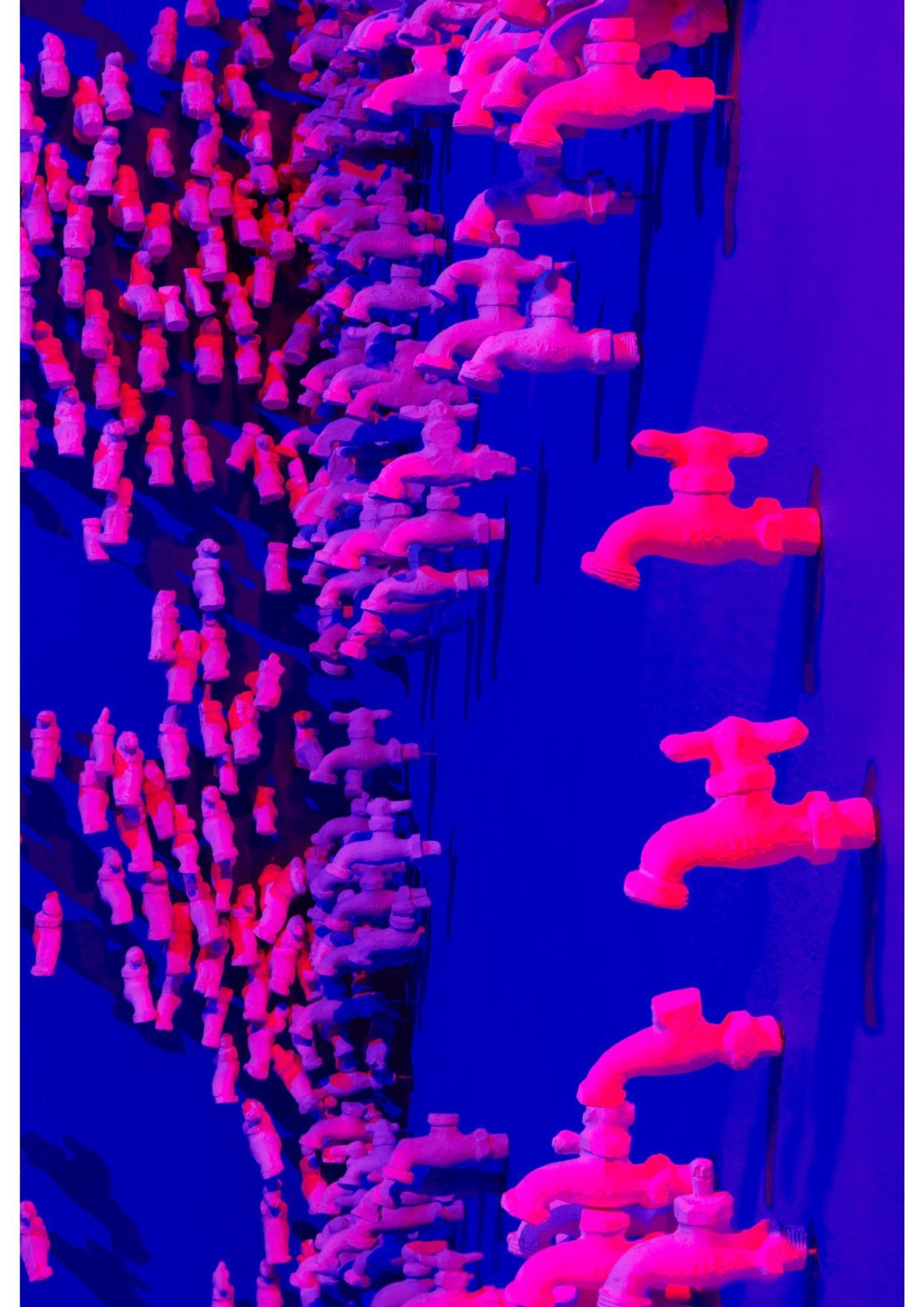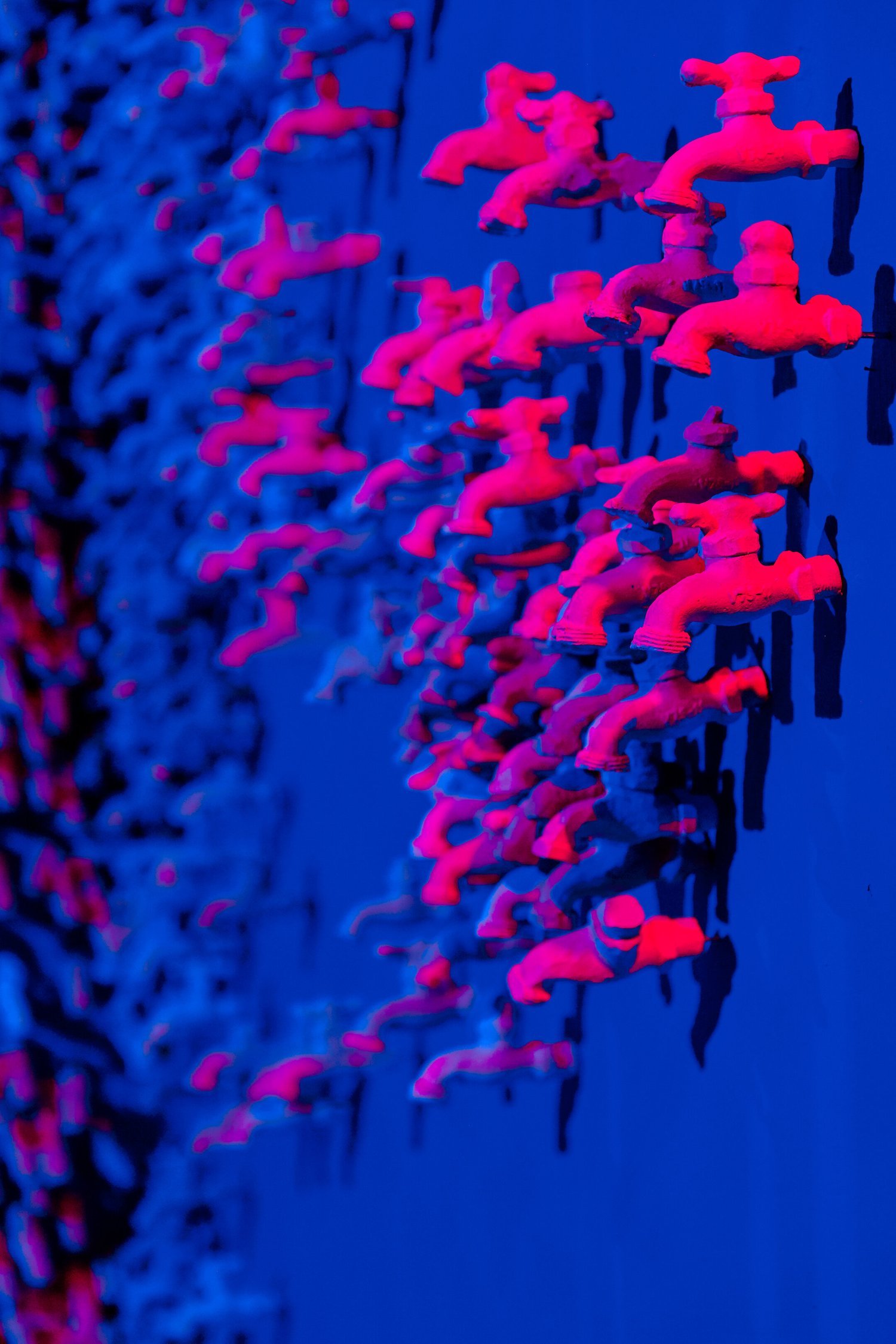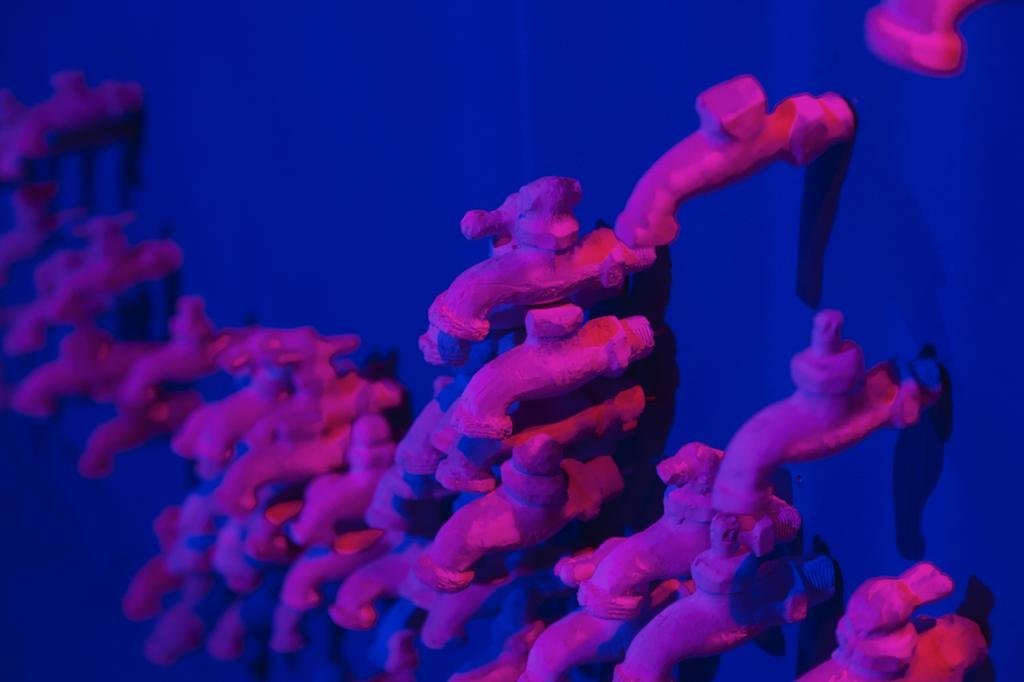the union and the Force
"The Union and The Force"
1300 hand-carved griffin sculptures.
Plaster, marble dust, mineral pigment, international blue acrylic paint, LED lights in pink, red, blue, and purple.
Assembly specifications (quantity of pieces needed and lights) will depend on the exhibition space.
The immersion into a space of fiction or fantasy is imminent. So is the notion of mania, madness, and accumulation. This is no longer just a room, a garage, a gallery. The plague has seized dreams, and it grows like moss from within. No one can stop this imaginary invasion, much less the reproduction of an object that seems to be taking revenge for its place on the list of important objects. If no one had written before about Considerations on Objects Appearing in Unexpected Places, this could be an opportunity.
Albertine Stahl (San Salvador, 1989) presents in this space her own fiction and the obsession of an artist for constructing new imaginaries and experiences. Her previous body of work reflects on the mechanisms of image construction, using various media sequentially to achieve a final result. Thus, what begins as a painting; is photographed, printed, cut, photographed again, and painted again, in a kind of insatiable exhaustion of the possibilities of composition and configuration of an icon. The primary images are always about significant landmarks. Images relevant to culture, history, and the present. But what happens when a compositionist is faced with an empty space and the possibility of any idea? First, an observation process. The house where the Gallery is located today used to be a dwelling place. In it, there are rooms, windows, doors, tiles, curtains, rails, lights, and water faucets out of context for the new intentions of the space. The pretense of turning a domestic site into an invented white cube reaches its own values of possibility. The house, then, despite everything, remains a house.
With what objects do we inhabit spaces like these? What things and forms become visible or imperceptible as we spend time in the same place? What objects survive forever in places that we change constantly? We leave, but objects stay there. Things then play camouflage to not be seen and endure even more over time. A switch that doesn't turn on any light ceases to be a nuisance when its presence is forgotten. A window through which no one sees is almost a wall. And an unused water faucet is just a protruding sculpture.
In her own visual construction process, Stahl finds the perfect object to contradict her own processes. If her usual images are reconfigurations of loaded symbols, this time the most forgotten object, a simple industrial faucet, takes on a new meaning in the context of a maniacal handmade production and an illogical composition of its real site. In total, there are 1100 plaster faucets handcrafted by the artist and dozens of volunteers, painted with local mineral pigments that spread over an ocean of too much madness. The space becomes a parallel dimension, and the lights paint the installation, creating an expanded painting, a delirium, once again returning to the multiple media that fascinate the artist.
Undoubtedly, the imperceptible object is now the subject of discourse. These small sculptures became a meeting point for all the hands that collaborated in their manufacture. An overvalued everyday object was the starting point for conversations, relationships, and new encounters. What if objects took over our spaces to build their own reality? The object is like us; it exists in space. The object inhabits the house in an even closer way because it is part of it. Our intentions to turn spaces into new places will always yield to the objects' own intentions that were there before us. They are testimonies to the history of places, to the first ideas of what that place wanted to be. Albertine's lunatic fantasy has created a metaphor about how we transform spaces and how objects take on new meanings. Everyday life combines with fantasy, and this new ecosystem of accumulation is the pictorial space of the work. The entire room is a huge collage and an essay on how the shape of objects also tells us things about how we coexist with them. Welcome to the illusion of another reality.
-Josseline Pinto
Galería Extra 2019
Guatemala City.






Montage and production





